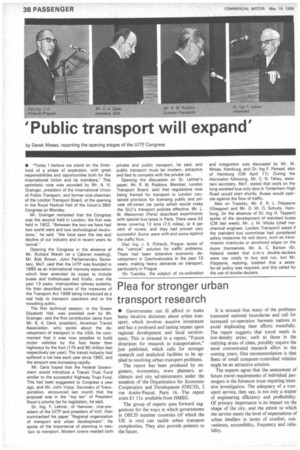Plea for stronger urban transport research
Page 40

If you've noticed an error in this article please click here to report it so we can fix it.
• Governments can ill afford to make hasty intuitive decisions about urban transport. which involves massive investment and has a profound and lasting impact upon regional development and local environment. This is stressed in a report. -Future directions for research in transportation," just published, which calls for stronger research and analytical facilities to be applied to resolving urban transport problems.
The report has been produced by engineers, economists, town planners, architects and city ad-ninistrators under the auspices of the Organization for Economic Cooperation and Development (OECD), 2 rue Andre-Pascal, Paris 16. The report costs £1 1 1 s. available from HMSO.
The group of experts puts forward suggestions for the ways in which governments in OECD member countries (of which the UK is one) can tackle urban transport complexities. They also provide pointers to the future. It is stressed that many of the problems transcend national boundaries and call for increased co-operation between nations to avoid duplicating their efforts wastefully. The report suggests that travel needs in low density areas, such as those in the outlying areas of cities, possibly require the most concentrated research effort in the coming years. One recommendation is that fleets of small computer-controlled vehicles might be an attractive solution.
The experts agree that the assessment of future travel requirements of individual passengers is the foremost issue requiring intensive investigation. The adequacy of a transport service, they say, is not only a matter of engineering efficiency and profitability. Of primary importance is.its impact on the shape of the city, and the extent to which the service meets the level of expectations of urban dwellers in terms of comfort, convenience, accessibility, frequency and reliability.






















































































































